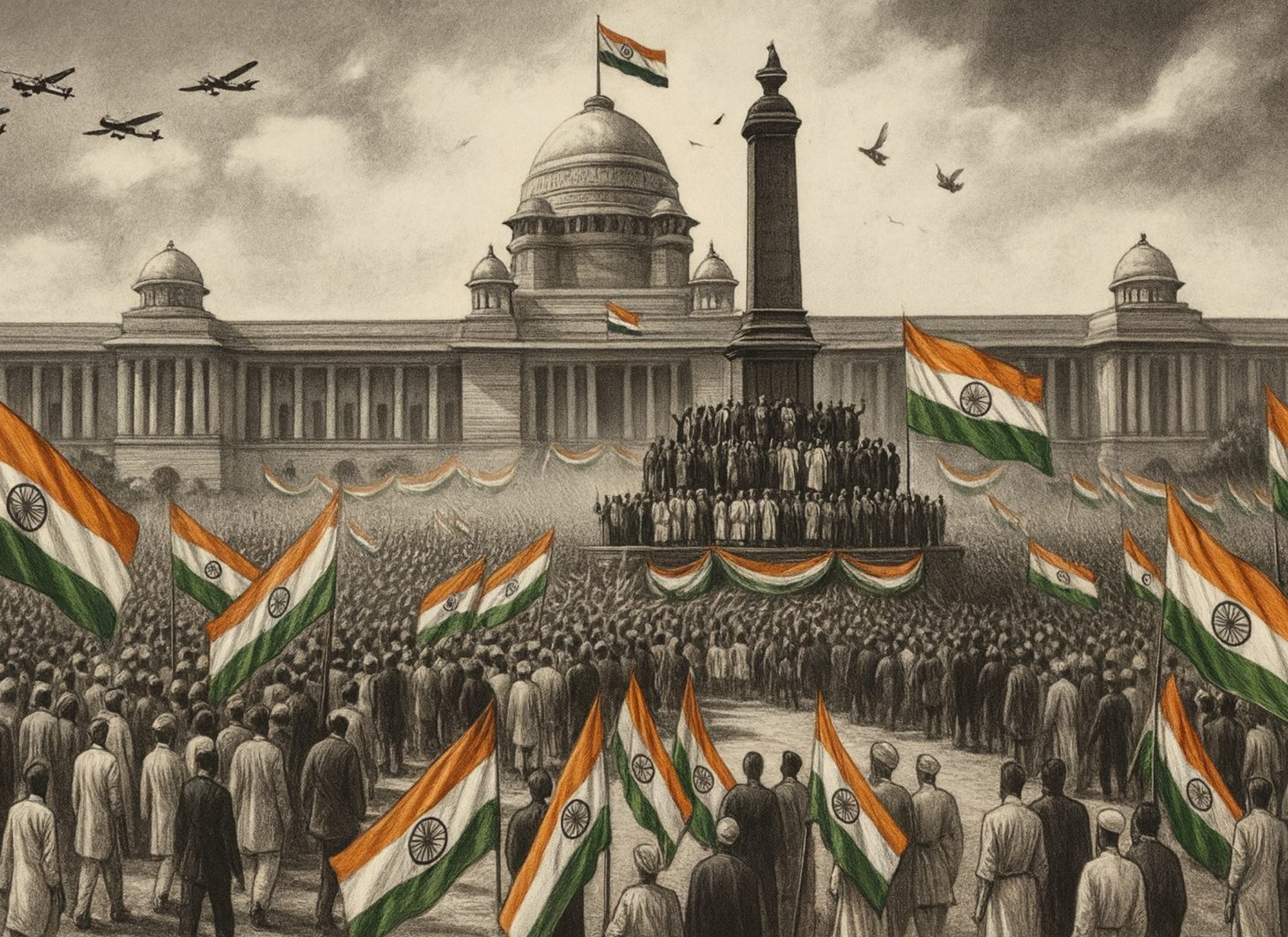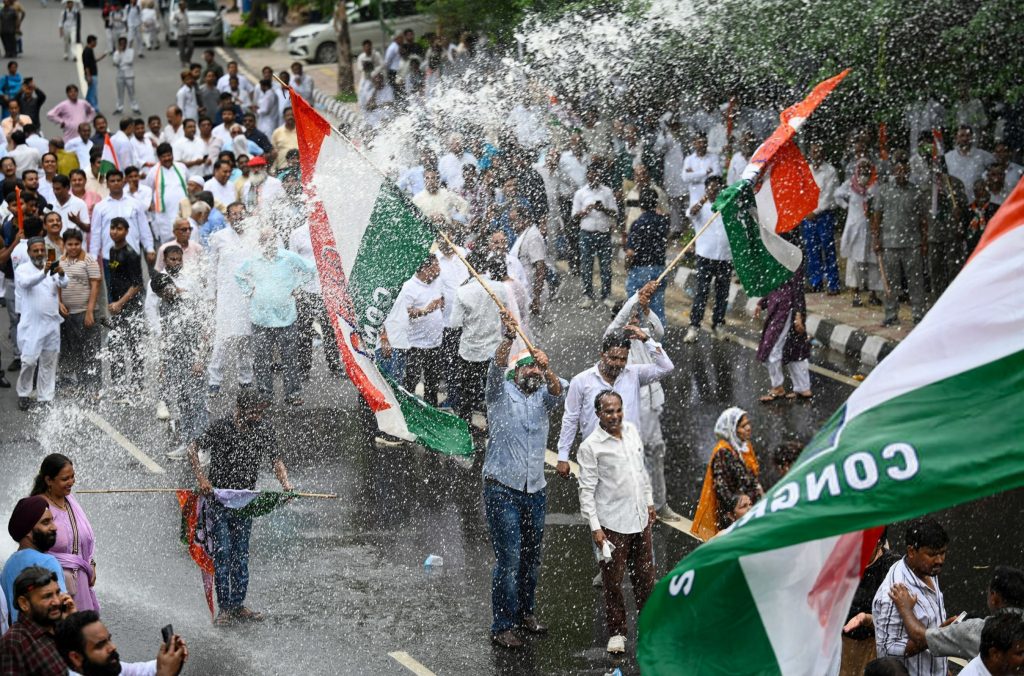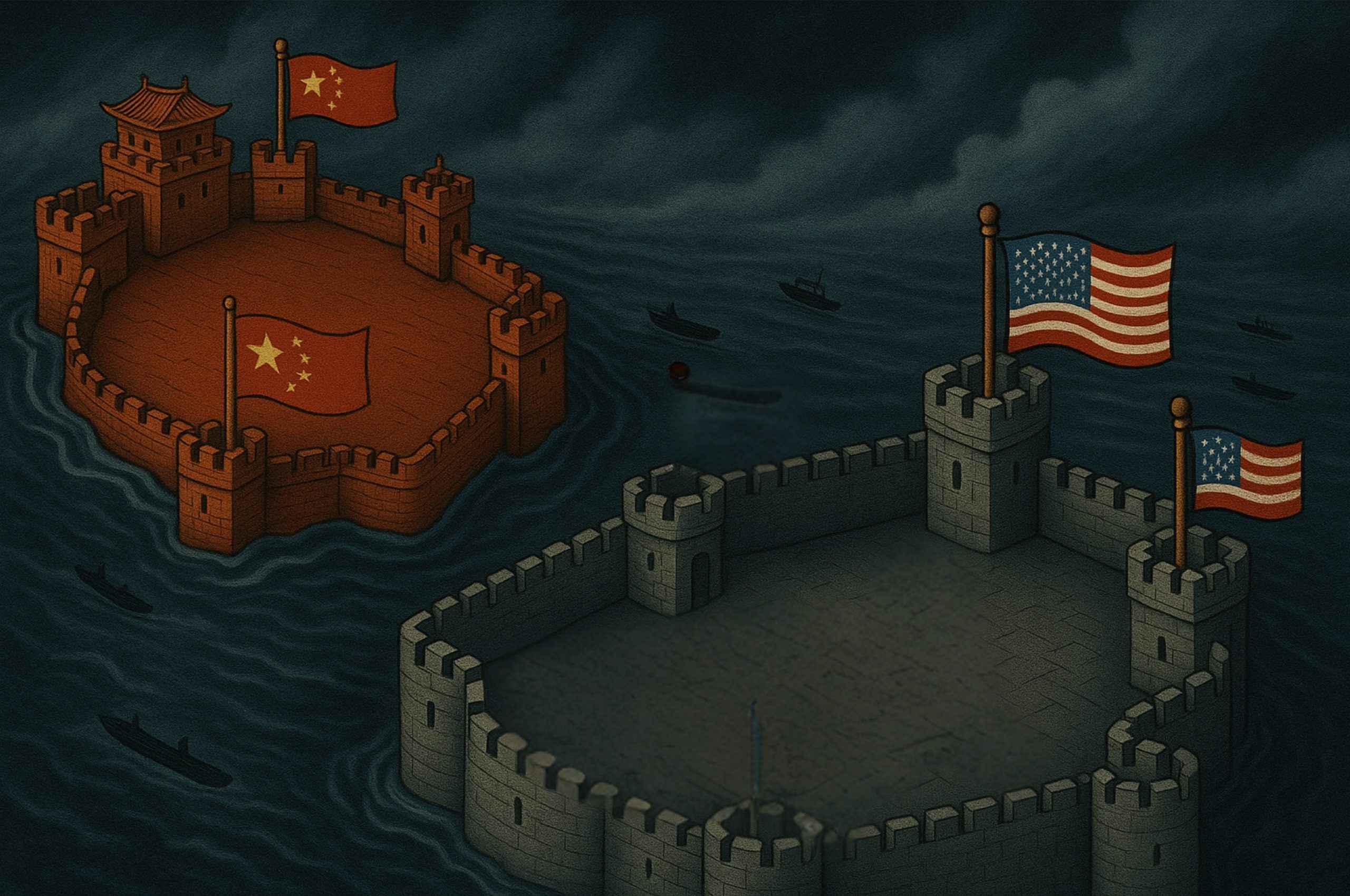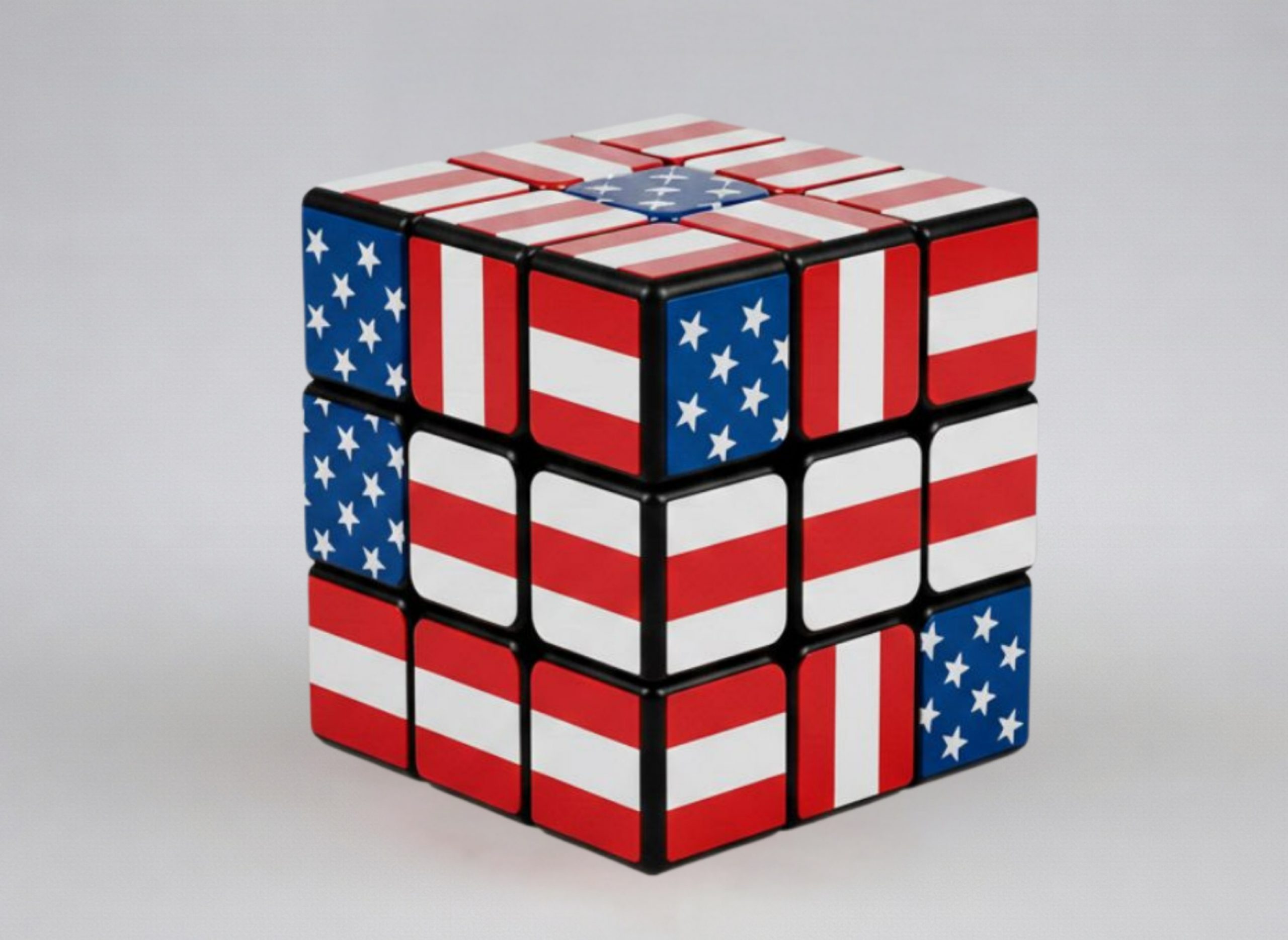
A Giant With Weak Legs
India’s Internal Challenges to Global Leadership
By | Sweety Kumari
NOVEMBER 03, 2025
Fall 2025
India today embodies a striking paradox. On the one hand, it is celebrated as one of the fastest-growing major economies, a vibrant hub of technological innovation, and a crucial actor in the shifting dynamics of a multipolar world. Its rising profile in forums such as the G20, BRICS, and the Indo-Pacific (QUAD) security architecture reflects not only its economic weight but also the expectations of the international community for India to assume a leadership role. On the other hand, its domestic landscape reveals a less flattering picture—marked by democratic backsliding, growing political polarization, and the weakening of institutional checks and balances. This tension raises a fundamental question: can a nation fractured within still aspire to credible global leadership? The issue is not merely about economic growth or geopolitical alignment, but about the nature of legitimacy in the 21st century.
Nations rise to leadership not by power alone, but by the steadiness of their own house. For decades, India’s democracy offered that image—plural, noisy, resilient. Now the picture flickers. As institutions bend under partisan weight and ideology tightens its grip, the same democracy that once set India apart from its authoritarian neighbors risks hollowing from within. Economic dynamism still fuels its global voice, yet moral authority has grown uncertain. The world listens to India’s ambitions, but it also watches its contradictions—and wonders whether a country divided at home can truly lead abroad.
India’s Balancing Act
When India became independent in 1947, few believed it would survive—let alone lead. Yet, over seven decades, the country has reinvented itself from a moral voice of the post-colonial world to an ambitious power seeking global influence. The constant struggle, however, remains the same: balancing ideals with interests, and moral leadership with material strength. In the early decades, Jawaharlal Nehru’s Non-Aligned Movement (NAM) became India’s declaration of independence in a world divided by the Cold War. Refusing to be anyone’s pawn, India positioned itself as the conscience of the newly decolonized world.
It mediated in Korea, condemned Western intervention in Suez, and backed China’s recognition at the U.N. Yet moral prestige proved a weak shield. The 1962 war with China and the 1965 conflict with Pakistan exposed how principle without power invited peril. By 1971, that innocence was gone. India’s decisive intervention in the Bangladesh war signaled realism’s arrival. The victory gave India regional authority, but dependence on Moscow for strategic cover showed how quickly autonomy could be compromised. Moralism had met geopolitics—and lost. Through the 1980s, India tried to convert moral standing into regional leadership. It led the creation of SAARC and cast itself as South Asia’s stabilizer. But ambition outpaced capacity.
The intervention in Sri Lanka under the 1987 Indo-Lanka Accord, meant as peacekeeping, ended as a political and military embarrassment. The Indian Peace Keeping Force became a symbol of overreach—a lesson that power projection without patience breeds distrust. Economic stagnation and political instability at home reinforced the limits of India’s reach. The 1990s demanded reinvention. The Soviet collapse robbed India of its strategic cushion, while the 1991 economic crisis forced liberalization. Diplomacy was now guided by markets, not ideology. The “Look East” policy turned India toward dynamic Asian economies, while formal ties with Israel marked a pragmatic shift from moral posturing to interest-based engagement. A new doctrine emerged: credibility abroad rests on stability at home.
By the 2000s, India had grown more assured. The 1998 nuclear tests asserted sovereignty even amid sanctions, and within years, New Delhi was signing the landmark civil nuclear deal with Washington. Simultaneously, it joined BRICS, deepened links with ASEAN, and expanded partnerships with Israel, Japan, and the Gulf states. “Non-alignment” evolved into “strategic autonomy”—the ability to engage all without being bound to any. Having once refused to take sides, India now learned to stand on many at once. Today, India seeks not just balance but leadership. As host of the G20 and voice of the Global South, it presents itself as a democratic counterweight to authoritarian powers. Yet beneath this global confidence, domestic contradictions persist—economic inequality, polarization, and concerns over democratic erosion threaten its soft power. The old tension between ideals and interests has simply taken a new form. India wants to lead as a model democracy; the world, however, is watching how it treats its own dissenters.
Democracy in Retreat
India once prided itself on being the world’s largest democracy—a pluralistic, secular nation that balanced diversity with stability. Today, that image is fraying. Under Prime Minister Narendra Modi and the BJP, liberal democracy is giving way to majoritarian rule, and institutions meant to check power are bending, if not breaking. Since Modi came to power, dissent has been quietly criminalized. Scholars, students, and activists—from Anand Teltumbde to JNU students—face arrests and harassment for speaking out. Critical media outlets like NDTV have been targeted. Policies such as Assam’s National Register of Citizens threaten to disenfranchise millions, predominantly poor Muslims.
Criticism is no longer a democratic right; it is a liability. Governance failures compound the problem. Stampedes, urban floods, fires in public buildings, overcrowded trains, underfunded hospitals—these disasters repeat themselves because the system is structurally weak. Cronyism and black-market influence dominate sectors from airports to cement, stifling innovation. Politicians chase identity-based short-term gains, while long-term accountability remains absent. Weak institutions and poor governance feed off each other in a vicious loop. Even formally independent institutions are compromised.
The Election Commission’s delayed action during 2019 violations, the politically charged arrest of former finance minister P. Chidambaram, and questionable appointments at the Reserve Bank of India suggest that the guardians of democracy are now its managers. The rulebook exists, but the referees are compromised. Majoritarianism is shaping policy too. Jammu and Kashmir lost its special status overnight in 2019 under lockdown and media restrictions. The Supreme Court’s Ayodhya verdict favored majority sentiment over secular principles. The BJP is consolidating a Hindu-majoritarian vision, sidelining secularism, federalism, and constitutional safeguards.
Civil society, caste dynamics, and India’s inherent diversity may slow the drift, but if unchecked, the foundations of democracy are at risk. Political polarization worsens the picture. Social media echo chambers spread misinformation, deepening religious, caste, and regional divides. Moderate voices are drowned. Legislative deadlocks, politicized national security, and policy paralysis reveal a state more concerned with scoring points than solving problems. Internal contradictions also stymie development. Bihar and Uttar Pradesh remain underdeveloped—a product of historical neglect, weak institutions, and caste-driven politics.

Maoist insurgencies exploit these governance gaps, while under-resourced police forces fail to protect the vulnerable. Bihar’s 2009 policing reforms show reform is possible—but it requires political will. These domestic weaknesses do more than hinder India at home—they shape its global credibility. The country aspires to lead the Global South, project influence in the Indo-Pacific, and maintain strategic autonomy. But a democracy under strain at home cannot claim moral authority abroad. India’s contradictions—weak institutions, social polarization, and governance gaps—threaten both domestic progress and global ambition. The lesson is clear: India cannot lead the world if it cannot govern itself. The stakes are high, and the world is watching.
The Ambiguous Power
India’s vaunted notion of strategic autonomy — once the moral anchor of its foreign policy — is showing signs of strain. What began as an assertion of postcolonial independence now risks devolving into strategic incoherence: a reluctance to choose, a hesitation to commit, and a widening gulf between ambition and action. Born of colonial memory and Cold War caution, India’s aversion to alliances remains deeply ingrained. As Rajendra Abhyankar (former Indian diplomat) notes in Indian Diplomacy, New Delhi’s non-alignment has evolved into “multi-alignment” — a pragmatic flexibility that allows it to engage with the U.S. in the Quad, maintain ties with Russia and China in BRICS and the SCO, and court the Global South simultaneously.
In theory, this offers freedom of manoeuvre; in practice, it risks projecting uncertainty. For Washington and Tokyo, India appears a hesitant partner — keen on technology and defense cooperation, yet unwilling to shoulder strategic responsibility. For Moscow and Beijing, it looks opportunistic — too close to the West to be trusted, too cautious to be counted on. The outcome is autonomy that increasingly resembles ambiguity. The China challenge exposes this fault line most starkly. Studies comparing Indian and Chinese strategic behavior underline a clear asymmetry — in military capability, infrastructure, and technological prowess.
Despite its modernization push and growing U.S. defense ties, India continues to practice “limited hard balancing,” careful not to tip into full-blown alliance politics. But this caution comes at a cost: India cannot balance China alone. Its economic and defense-industrial constraints make external partnerships indispensable. Yet the instinct to preserve autonomy prevents New Delhi from fully leveraging collective platforms like the Quad. The persistent Pakistan factor further narrows strategic space, forcing India into defense management rather than power projection. Autonomy without capability or clarity risks becoming self-defeating.
Strategic autonomy should be the freedom to act, not the freedom to avoid action.
In the book The India Way, India’s Foreign Minister S. Jaishankar argues that the country must blend civilizational confidence with strategic realism. That means setting clear priorities, investing in capability, and forging purposeful partnerships — not for dependency, but for empowerment. Strategic autonomy should be the freedom to act, not the freedom to avoid action. If India continues to mistake flexibility for strategy, it risks being overtaken by the choices of others. To lead in an era of flux, New Delhi must turn autonomy from a shield into a tool — one defined by clarity, capability, and conviction.
The Grammar of Leadership
India’s foreign policy today rests on the twin pillars of strategic autonomy and multipolarity. Emerging from a colonial past, India has long sought freedom of manoeuvre — the ability to engage diverse powers without being bound by any single alliance. The idea of a multipolar world, where power is dispersed rather than concentrated, promises precisely this space. By maintaining relations with the U.S., Russia, Europe, Japan, and the Global South, New Delhi presents itself as both bridge and balancer — pragmatic, independent, and indispensable. Yet beneath this confident posture lies a structural contradiction.
India’s quest for autonomy is sustained by deep interdependence with the very West it seeks to balance. The country’s trade, technology, and financial flows remain tied to Western-led systems, from defense procurement to digital infrastructure. This creates what might be called asymmetric autonomy: freedom in rhetoric, dependence in reality. India aspires to shape the global order even as its rise remains anchored in it. This paradox also defines India’s ambivalent relationship with the liberal international order. While India benefits from open markets and global stability, it resists Western prescriptions on democracy, human rights, and climate obligations.
It demands reforms in institutions such as the U.N. Security Council and the IMF, not to dismantle the order but to democratize it. The outcome is a posture that weakens unipolar dominance yet stops short of offering an alternative moral vision. India’s foreign policy has become skillful in positioning — less so in persuasion. The comparison with other major powers is revealing. The U.S. still leads through institutions and ideals; the European Union exerts influence through regulation and standards; China projects a counter-model of authoritarian developmentalism. India, by contrast, remains a hybrid — a democracy that resists Western tutelage but lacks the ideological coherence or institutional capacity to export its own model. The result is influence without authority — a rise without resonance.
The challenge is compounded by domestic contradictions. A nation increasingly marked by inequality, polarization, and institutional fragility finds it difficult to speak as a moral force abroad. India’s greatest diplomatic strength once lay in the power of its example — a plural democracy achieving development through consent rather than coercion. As that example weakens, so too does the credibility of India’s global narrative. Leadership demands moral clarity, not just strategic flexibility. India’s ascent, therefore, is both remarkable and incomplete. It has mastered the language of multipolarity but not yet the grammar of leadership. Its material rise has outpaced its normative imagination. To move from balancing to shaping power, India must move beyond tactical autonomy toward strategic purpose — defining what it stands for, not merely what it stands against. Without such clarity, India risks remaining a power of immense potential but uncertain direction — navigating the multipolar world deftly, yet guiding none within it.
Can India Still Inspire?
India today stands at an inflection point — a nation admired for its ascent yet admonished for its contradictions. Its rise has been impressive: the world’s fastest-growing major economy, a digital powerhouse, and a diplomatic actor courted by every major capital. Yet beneath this narrative of resurgence lies a quieter reckoning. Can a country that falters in upholding its own democratic ethos truly claim the mantle of global leadership? The 21st century rewards nations that embody stability, credibility, and moral clarity — attributes that arise as much from internal legitimacy as from external ambition.
For India, this means that domestic renewal is no longer a moral choice but a strategic imperative. The strength of its institutions, the independence of its judiciary, the vibrancy of its media, and the protection of dissent are not abstract ideals; they are instruments of power. They form the scaffolding upon which international trust is built. Yet India’s internal dissonance threatens to blunt its external promise. Majoritarian politics, eroding checks and balances, and a shrinking civic space have begun to tarnish the very image that once distinguished India from its authoritarian counterparts. A nation that aspires to lead the Global South cannot appear indifferent to the pluralism that defines it.
To reclaim moral authority, New Delhi must demonstrate that democracy is not merely an inheritance but a living practice. Equally, institutional renewal must accompany economic ambition. A $5 trillion economy with fragile governance will remain brittle. Reforms must move beyond macroeconomic targets to the deeper architecture of accountability — from transparent policymaking and depoliticized institutions to an independent bureaucracy capable of long-term planning. The world will measure India’s leadership not only by growth charts but by the quality of its governance. In foreign policy, the challenge is similar.
Strategic autonomy should not become a euphemism for strategic hesitation. Multipolarity must rest on purpose, not posture. India’s voice carries weight when it articulates a vision larger than self-interest — whether in climate justice, equitable trade, or reform of global institutions. To do so credibly, it must align the moral imagination of its diplomacy with the democratic integrity of its polity. At this juncture, India would do well to recall the lessons of the Arthashastra — Kautilya’s timeless manual on statecraft, which saw power not as domination but as disciplined governance rooted in rajdharma.
Kautilya argued that the legitimacy of a state rests on the welfare of its people, the efficiency of its institutions, and the wisdom of its rulers. His vision of artha (material strength) balanced by dharma (ethical order) offers a template for modern renewal. For a 21st-century India, this means marrying economic pragmatism with moral purpose, and national ambition with institutional restraint — a blend of realism and responsibility that can restore both credibility and confidence.
Ultimately, the contest of this century is not between democracies and autocracies, but between nations that inspire and those that merely assert. India’s moral power once flowed from its example — a plural, argumentative democracy charting its path through consensus rather than coercion. Recovering that legacy is the true test of leadership. The choice before India is stark: it can continue as a reactive power — large, ambitious, yet constrained by its own contradictions; or it can renew its institutions, reaffirm its liberal spirit, and emerge as the credible voice of a more just and multipolar world. The world is ready to listen. What remains to be seen is whether India can still speak with the authority of its ideals.

